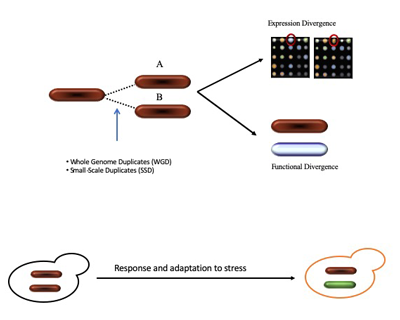Title: Unravelling functional innovation: genomic duplication as a source of innovative processes
Research Group: Panomics and Evolutionary Systems Microbiology
Duplication events, from gene to whole genome, generate large amount to genetic material and potentially novel functions. The ubiquity of gene duplicating in all levels of life, including unicellular and multicellular organisms, support the universal nature of this phenomenon. Indeed, the modularity of living systems, from the molecular-biochemical to the morphological level, has been driven by events of gene/genome duplication. Although, almost all researchers agree on the existence of a link between gene duplication and innovation, the underlying mechanisms are still not well characterized. In particular, it remains debatable the factors that are mostly determinant of the functional fate of the gene copies after duplication. The adaptive value of increasing gene dosage, maintenance of stoichiometric balance, and mutational robustness has been previously presented as main players in the persistence of duplicated genes in the genome.
In this project we will combining the power of computational approaches and experimental evolution of Saccharomyces cerevisiae, to characterize the molecular pathways that duplicated genes of S. cerevisiae follow to their functional fates and the main factor determine these fates. In particular, we will determine the role of expression and functional divergence in innovation by gene duplication, the potential of ancient duplicated genes to innovate, and the role of environmental dynamics in enabling functional innovation by gene duplication.
Ref. SEJI/2018/046
Christina Toft
- Navarro Huerta, Jesús (Lab technician)
- Sabater-Muñoz, Beatriz (CSIC)
Conselleria d’Educació, Investigació, Cultura i Esport, Generalitat Valenciana















